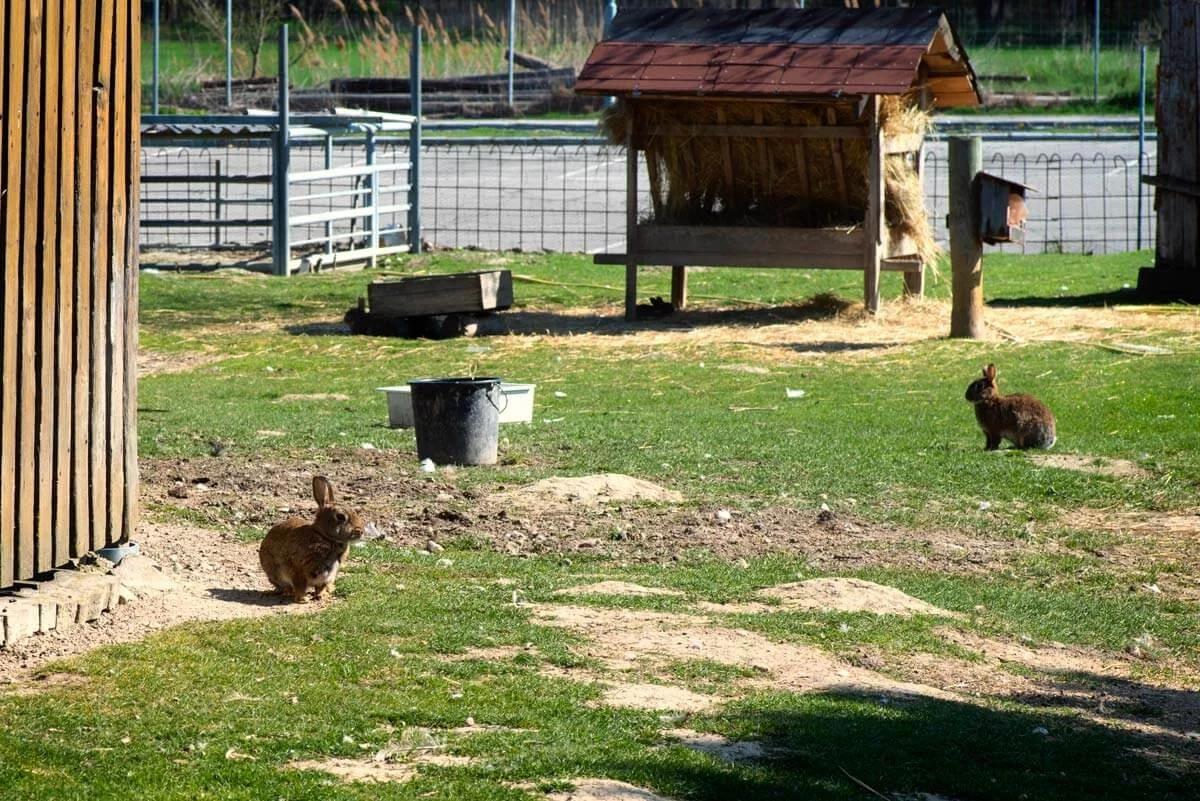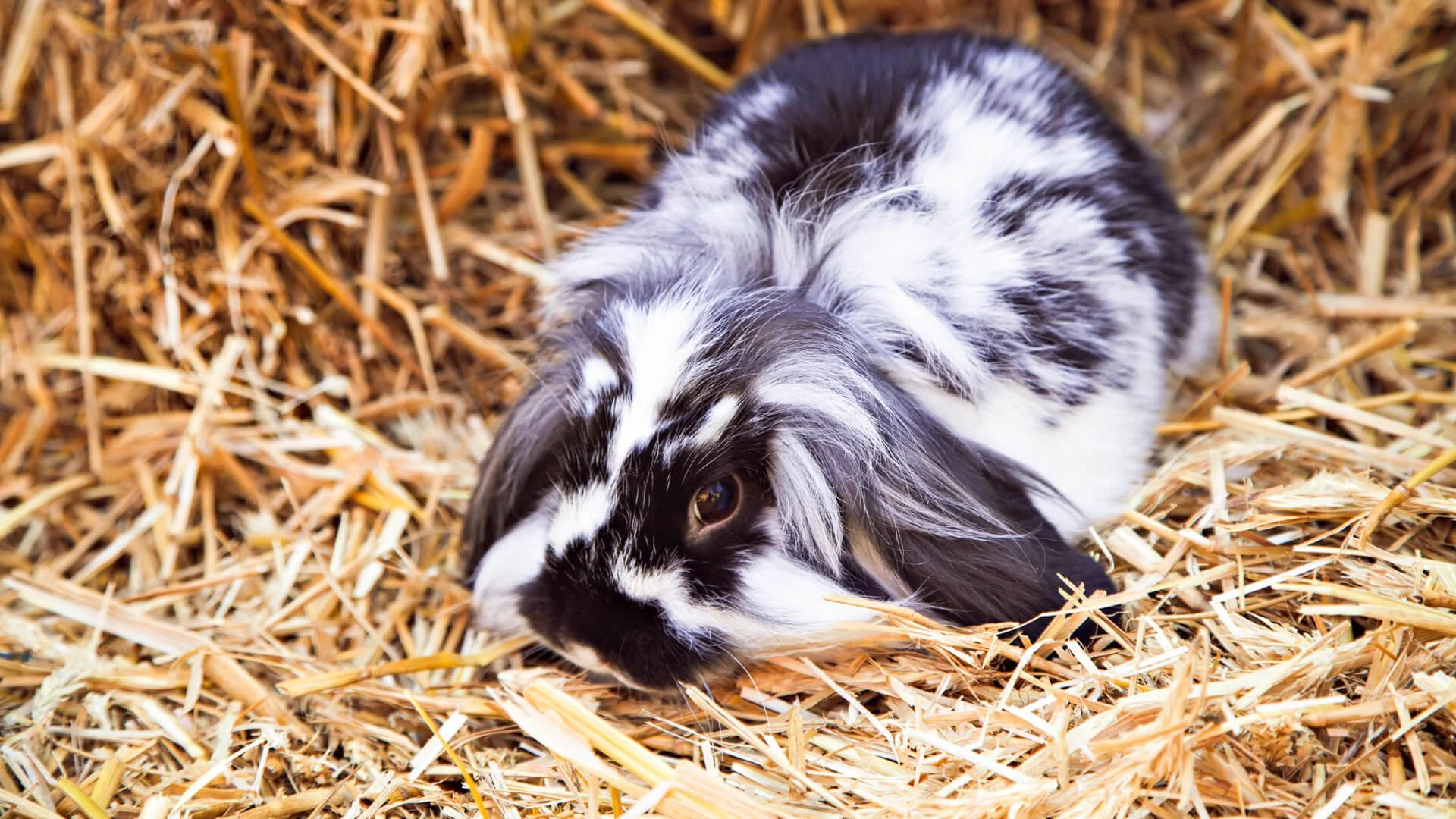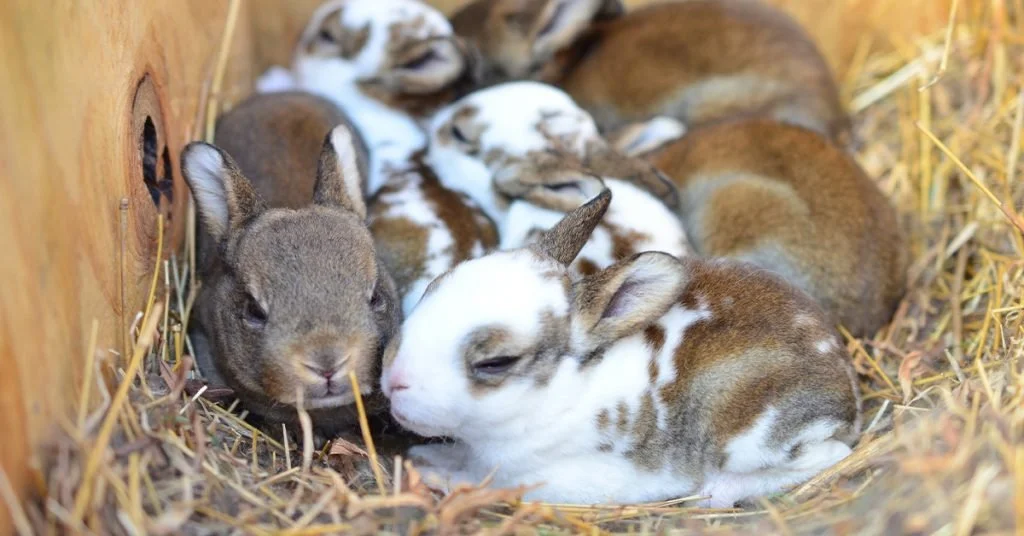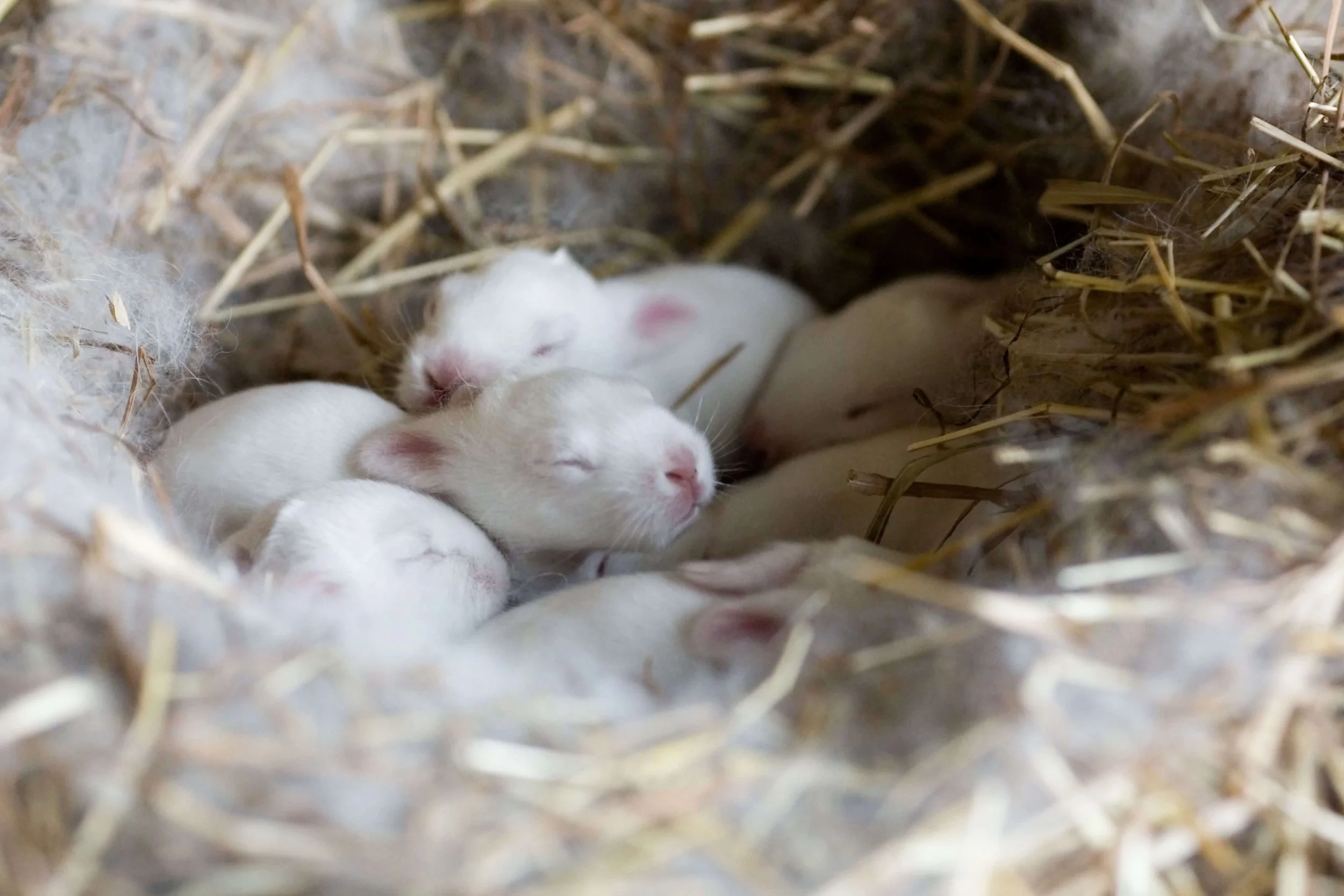From Fluff to Fork: Breeding Rabbits for Meat - A Sustainable and Tasty Alternative
Discover > Raising Rabbits > From Fluff to Fork: Breeding Rabbits for Meat - A Sustainable and Tasty Alternative
A Whisker Away from Culinary Delights
Step right into the extraordinary world of rabbit breeding, where adorable companions meet mouthwatering culinary creations! While most people envision rabbits as cute and cuddly pets, these furry creatures hold a secret that will tantalize your taste buds.
Brace yourself for a surprising revelation: rabbit meat is gaining rapid popularity among food enthusiasts, chefs, and even home cooks. When you decide to breed rabbits, it's essential to carefully manage the process. Introduce the male rabbit to the mother rabbit in a controlled setting, such as the buck's cage in the doe's territory.
Mate the rabbits when both are in the right condition, ensuring the male rabbit is gentle during the process. Male rabbits, or bucks, should be selected for breeding based on their genetics and suitability for meat production to ensure the best possible offspring for your meat rabbit breeding program.
Breeding rabbits for meat is a practical and rewarding endeavor. Select rabbits of the same breed to ensure consistent meat quality. Housing is crucial, with separate cages for males (bucks) and females (does). When ready, mate rabbits carefully. Soon, you'll have baby rabbits, often referred to as kits.
It's essential to provide a nest box in the doe's cage for their comfort. With proper care, you can raise healthy and robust meat rabbits, whether as a hobby or for commercial purposes. Keep in mind that breeding meat rabbits differs from raising pet rabbits, as the focus is on meat production rather than companionship. Always ensure a harmonious environment when housing two rabbits together.
Monitoring the mother rabbit's health and comfort is crucial during pregnancy, as it directly impacts the well-being of the upcoming litter. Proper care and attention to these key details will help you succeed in breeding healthy and thriving rabbit offspring for meat production. So, don your apron, prepare for a gastronomic adventure, and allow us to guide you through the art of breeding rabbits for meat.
Why Choose Rabbit Meat? Hop on the Flavor Express!
Prepare your taste buds for a journey like no other as we explore why rabbit meat has garnered much acclaim in the culinary world. Delighting palates with its delicate flavor and tender texture, rabbit meat is an exceptional addition to any gastronomic adventure.
Unlike the familiar tastes of beef or pork, rabbit meat offers a distinctive flavor profile that sets it apart. Imagine a mild, slightly sweet taste that leaves a memorable impression on your palate. With a touch of familiarity akin to chicken, rabbit meat presents a unique opportunity to embark on a culinary exploration that is both exciting and satisfying.
One of the remarkable aspects of rabbit meat is its versatility in the kitchen. Whether you prefer comforting stews, succulent roasts, tantalizing grills, or savory sautés, rabbit meat adapts beautifully to a wide range of cooking methods and flavors. Its tender texture allows it to absorb the flavors of herbs, spices, and marinades, creating a harmonious blend of tastes that will leave you yearning for more.
As you savor the delicate flavors of rabbit meat, you'll discover its ability to complement a variety of ingredients and culinary styles. From traditional recipes passed down through generations to innovative creations that push the boundaries of taste, rabbit meat offers a canvas for culinary creativity.
So, hop on the flavor express and let rabbit meat elevate your culinary experiences to new heights. Embrace the opportunity to indulge in a taste sensation that is both distinctive and delightful, as you explore the countless possibilities that rabbit meat has to offer.
The Benefits of Rabbit Meat: Healthy and Sustainable
Beyond its delightful taste and culinary versatility, rabbit meat offers a plethora of health benefits that make it a wise choice for those seeking a nutritious protein source. Let's dive into the reasons why rabbit meat stands out as a healthy and sustainable option.
Healthier option
One of the remarkable qualities of rabbit meat is its natural leanness. With significantly lower fat content compared to other meats, such as beef or pork, rabbit meat presents a lean and healthy alternative. Its low cholesterol levels make it an excellent choice for individuals aiming to maintain a heart-healthy diet or manage their cholesterol intake.
In addition to being lean, rabbit meat is packed with essential nutrients that contribute to overall well-being. It is an excellent source of high-quality protein, which plays a crucial role in muscle development, repair, and overall body functions.
Rabbit meat is also rich in essential vitamins and minerals, including iron, zinc, and vitamin B12. Iron supports healthy red blood cell production, while zinc contributes to immune function and wound healing. Vitamin B12 is vital for nerve function and the formation of red blood cells.
Eco-conscious Option
From an environmental perspective, breeding rabbits for meat production demonstrates remarkable sustainability. Unlike larger livestock, rabbits require minimal space for their habitats. This means that even those with limited land or resources can engage in rabbit breeding for meat.
Additionally, rabbits are efficient feed converters, meaning they consume less feed compared to larger animals. Their efficient metabolism allows them to convert feed into meat with higher efficiency, reducing the environmental impact of meat production.
Furthermore, rabbits have a relatively short breeding cycle, allowing for more frequent reproduction and meat production. This efficient breeding cycle contributes to a faster turnaround time from birth to harvest, making rabbit meat production an attractive option for those seeking sustainable and efficient food production methods.
By choosing rabbit meat, you not only embrace a healthy protein source but also contribute to sustainable practices in the food industry. Reducing the carbon footprint associated with meat production is crucial in our efforts to protect the environment and ensure a greener future.
So, whether you're seeking a nutritious and lean protein source or aiming to make environmentally conscious choices, rabbit meat presents itself as a win-win option. Embrace the health benefits and sustainability that rabbit meat offers, and savor its delicious flavors guilt-free.
Breeding Rabbits for Meat: A Bunnyful Adventure
Now that you're excited about the prospects of rabbit meat, let's explore how to breed these adorable creatures for meat production. Here are some steps to get you started on your bunny adventure:
Selecting the Right Breed: Tailoring to Your Tastebuds
Choosing the right breed is an important first step in breeding rabbits for meat. Several rabbit breeds are suitable for meat production, such as New Zealand White, Californian, and Flemish Giant. Each breed has its characteristics, including size, growth rate, and meat yield. Research these factors to choose the breed that best suits your requirements and culinary preferences.
Creating a Comfortable Habitat: Hare-raising Homes
Just like us, rabbits thrive in a comfortable and stress-free environment. When it comes to breeding rabbits for meat, providing them with a well-designed and accommodating habitat is essential for their health and well-being. Let's explore the key factors to consider when creating a hare-raising home for your rabbits.
Sufficient space
First and foremost, rabbits require sufficient space to move around and exercise. Whether you choose individual or group housing, it is crucial to ensure that each rabbit has ample room to hop, stretch, and explore. This space promotes physical activity, which is essential for their overall health and happiness. Ideally, each rabbit should have a designated area of at least four square feet, but the more space they have, the better.
Ventilation
Proper ventilation is also a critical aspect of their habitat. Good airflow helps to regulate temperature and maintain air quality, reducing the risk of respiratory issues. Ensure that the housing allows for proper ventilation, either through well-placed windows, vents, or gaps in the construction that facilitate air circulation.
Quality materials for nest box
When it comes to the housing structure itself, opt for materials that are easy to clean and maintain. Hutches or cages made of durable materials such as wood or metal are commonly used. Consider using wire flooring, as it allows for better waste management and reduces the risk of bacterial growth.
However, wire flooring can be uncomfortable for the rabbits' feet, so providing solid flooring in certain areas, such as resting zones, is advisable. Solid flooring can be made of materials like wood or plastic, and it should be covered with appropriate bedding.
Bedding plays a crucial role in ensuring the comfort of your rabbits. Straw or hay is an excellent choice for bedding material as it provides a soft and cozy surface for them to rest on. It also absorbs moisture and helps control odors. Regularly clean and replace the bedding to maintain a hygienic environment for your rabbits.
Conducive environment
Creating a stimulating environment is also important for the mental well-being of your rabbits. Include hiding spots, tunnels, toys, and other enrichments to keep them engaged and prevent boredom. This can include items such as cardboard boxes, tunnels made from PVC pipes, or even hanging toys for them to play with. The inclusion of these enrichments will provide mental stimulation and help prevent destructive behaviors.
Ensure that the housing is secure and protects the rabbits from predators. Properly constructed hutches or cages with sturdy doors and locks will keep your rabbits safe from potential threats.
Nutrition Matters: Feed Their Appetites
Just like any living beings, rabbits require a well-balanced and nutritious diet to support their growth, development, and overall health. When breeding rabbits for meat, providing them with the proper nutrition is crucial for optimal meat production. Let's explore the key components of a rabbit's diet and how to ensure they receive the nutrients they need.
A high-quality rabbit pellet serves as the foundation of their diet. These specially formulated pellets are readily available and provide a balanced mix of essential nutrients, including proteins, vitamins, and minerals. Look for pellets specifically designed for meat rabbits, as they will contain higher protein content to support meat development. Feed the pellets according to the manufacturer's instructions, adjusting the portion sizes based on the age and weight of your rabbits.
Fresh greens play an essential role in a rabbit's diet, providing additional nutrients and adding variety to their meals. Offer a selection of leafy greens such as kale, parsley, romaine lettuce, and cilantro.
Introduce new greens gradually to avoid digestive upset, and monitor how your rabbits react to each type of green. It's important to note that not all greens are safe for rabbits, so consult with a veterinarian or experienced rabbit breeder to ensure you're offering suitable options.
Hay is a crucial component of a rabbit's diet as it aids in proper digestion and helps maintain healthy dental health. Timothy hay is an excellent choice, as it is readily available and provides the necessary fiber to keep their digestive system functioning optimally. Offer unlimited amounts of hay, as rabbits need to chew on it regularly to wear down their continuously growing teeth.
Fresh water should be available to your rabbits at all times. Ensure that they have access to clean, fresh water in a spill-proof container. Check the water supply regularly to ensure it hasn't become contaminated or depleted.
Consulting with a veterinarian or an experienced rabbit breeder is highly recommended to determine the appropriate feeding schedule and portion sizes for your rabbits. Factors such as the breed, age, and overall health of your rabbits should be taken into account when establishing a feeding routine.
It's important to monitor your rabbits' weight and overall condition regularly. Adjust their diet if necessary, based on their growth and body condition. Overfeeding or underfeeding can have adverse effects on their health and meat development.
Remember that providing a well-balanced and nutritious diet is key to raising healthy rabbits for meat production. By meeting their dietary needs, you'll ensure they grow properly, develop flavorful meat, and maintain their overall well-being throughout their journey from fluff to fork.
Breeding Process: A Bunny Love Story
Once your rabbits have reached sexual maturity, typically around 5-7 months of age, it's time to introduce a male and female rabbit for mating.
Breeding rabbits can be an exciting and rewarding experience, but it's important to ensure a stress-free environment and monitor their breeding progress carefully. Here's what you need to know about the breeding process.
Before introducing the rabbits, make sure they are both in good health and free from any illnesses or conditions that could affect their ability to breed successfully. It's also crucial to consider the temperament and compatibility of the rabbits.
While rabbits are social animals, not all pairs will be compatible for breeding. Monitor their interactions and consult with a veterinarian or an experienced rabbit breeder if you have concerns.
When introducing the rabbits, provide them with a neutral and spacious area where they can interact without feeling territorial or threatened. Supervise their interactions closely to ensure there is no aggressive behavior. It's essential to create a calm and stress-free environment to encourage successful mating.
Rabbits are known for their prolific breeding capabilities, so be prepared for a growing bunny family. Once the rabbits have mated, the female will undergo a gestation period of approximately 28-31 days.
During this time, it's crucial to provide her with a quiet and comfortable nesting area. Prepare nesting boxes filled with soft bedding, such as straw or shredded paper, a few days before her expected delivery date.
Monitor the pregnant female closely as her due date approaches. Ensure she has access to fresh water and a nutritious diet to support her and the developing kits. Avoid disturbing her nest or handling the newborn kits unless necessary, as excessive handling can cause stress or abandonment.
After the breeding process, it is essential to separate the male and female rabbits to avoid constant mating and potential stress on the female. Continuous mating can exhaust the female and may lead to health complications. Provide separate living spaces for the male and female rabbits, allowing them time to rest and recover.
Keep in mind that rabbit breeding can result in multiple litters, and the breeding cycle can occur rapidly. It's important to plan and prepare for the increasing number of rabbits that may result from successful breeding. Consider the space requirements, housing arrangements, and resources necessary to care for the growing bunny family.
Pregnancy and Nesting: Bunny Birth and Care
Once the breeding process is successful, your female rabbit will embark on an incredible journey of pregnancy and motherhood. Understanding the pregnancy and nesting process is essential to ensure the well-being of the mother and the healthy development of the kits. Let's explore the key aspects of bunny birth and care.
Female rabbits have a relatively short gestation period of approximately 28-31 days. As the due date approaches, it's important to provide the pregnant rabbit with a nesting box filled with soft bedding, such as straw or shredded paper.
Place the nesting box in a quiet and secluded area of the enclosure a few days before her expected delivery date. This gives the mother time to explore and prepare the nest according to her instincts.
During this time, it's crucial to monitor the pregnant rabbit closely. Keep an eye out for any signs of discomfort or distress. Some indications that she may be nearing labor include restlessness, nesting behavior, and pulling fur from her body to line the nest. While it's essential to observe her, try not to disturb her unnecessarily as this may cause stress and disrupt the nesting process.
Once labor begins, the mother will typically give birth to her kits one by one. This process can take several hours or even longer.
It's essential to provide the mother with a calm and quiet environment, minimizing disturbances as much as possible. Avoid handling the kits unless necessary, as excessive handling can interfere with the bonding process and stress the mother.
After each kit is born, the mother will instinctively clean them and stimulate their breathing by licking them. This process is crucial for their survival. Allow the mother to care for her kits without interference, as she knows best how to meet their needs.
Proper nutrition and care during pregnancy and lactation are crucial for the health and development of both the mother and the kits. Provide the pregnant and nursing rabbit with a nutritious diet that includes high-quality pellets, fresh greens, and unlimited access to fresh water. Consult with a veterinarian or an experienced rabbit breeder to ensure you are meeting their specific dietary needs during this time.
As the kits grow, it's important to continue monitoring their progress and ensuring they receive adequate nutrition. The mother's milk will provide the necessary nourishment during the first few weeks, but gradually introduce solid food, such as pellets and fresh greens, as the kits grow and start to explore their surroundings.
Remember, each rabbit is unique, and individual experiences may vary. If you have any concerns about the mother's health or the well-being of the kits, don't hesitate to seek guidance from a veterinarian or an experienced rabbit breeder. They can provide you with valuable advice and support throughout the process.
Hoppy Thoughts for Successful Breeding
Breeding rabbits for meat can be an exciting and fulfilling endeavor, but it's important to consider several key factors to ensure a successful and responsible breeding program.
Here are some hoppy thoughts to guide you along the way:
Legal and Ethical Considerations: Following the Hoppy Rules
Before diving into rabbit breeding, it's essential to research and understand the legal and ethical considerations surrounding the practice in your region. Check local regulations and guidelines about breeding rabbits for meat production.
Ensure that you comply with any permits or licenses required for breeding and selling rabbit meat. Additionally, prioritize the ethical treatment of your rabbits by providing them with proper care, appropriate living conditions, and access to veterinary attention when needed. Upholding high standards of animal welfare is crucial throughout the breeding process.
Time and Commitment: Paws-itively Dedicated
Breeding rabbits requires a significant investment of time, patience, and dedication. Be prepared to commit to the care and well-being of your rabbits.
This includes providing regular feeding, cleaning, and health checks. Breeding rabbits also requires careful planning and management of their breeding cycles, as well as raising and socializing the kits.
Consider the time required for these tasks and ensure you have the necessary commitment to provide the best care for your rabbits. A well-structured schedule and efficient time management will help you stay organized and ensure the success of your breeding endeavors.
Space Requirements: Room for Binky Jumps
Assess the available space you have for housing and expanding your rabbitry. Providing adequate space is vital for the well-being and comfort of your rabbits. Each rabbit should have sufficient room to move around, stretch, and exhibit natural behaviors like hopping and binky jumps.
Evaluate your current space and plan for future expansion if necessary. Consider the space requirements for growing litters, separate housing for breeding pairs, and areas for exercise and socialization. A spacious and well-designed environment promotes healthy development and reduces the risk of stress-related issues among your rabbits.
Health and Care: Fluffy Friends, Healthy Friends
Maintaining the health and well-being of your rabbits is of utmost importance in a successful breeding program. Regularly monitor their health and behavior, and establish a relationship with a veterinarian experienced in rabbit care.
Consult with the veterinarian to develop a comprehensive health care plan, including vaccinations, parasite control, and regular check-ups.
Practice proper hygiene in your rabbitry to prevent the spread of diseases. Ensure a clean living environment, provide fresh water, and feed your rabbits a balanced diet tailored to their nutritional needs. By prioritizing their health and well-being, you're setting the foundation for a thriving rabbit breeding venture.
By considering these hoppy thoughts, you are laying the groundwork for a responsible and successful rabbit breeding program.
Embrace the dedication required, adhere to legal and ethical guidelines, provide ample space and excellent care for your rabbits, and watch as your efforts blossom into a flourishing meat production endeavor. With a keen focus on welfare and best practices, you'll be on the path to hoppy breeding success.
Hare-raising Good Delicacies Await!
Breeding rabbits for meat opens up a world of culinary possibilities while promoting sustainability and providing a healthy protein source. These fluffy creatures can offer you a unique gastronomic experience like no other.
So, grab your chef's hat, embrace the adventure, and hop into the delightful realm of rabbit meat. With careful consideration, proper care, and a passion for culinary excellence, you'll be able to enjoy the rewards of breeding rabbits for meat while savoring their delectable flavors. Bon appétit!











